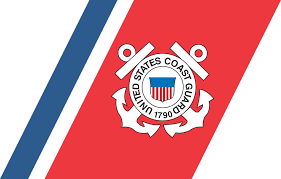This MSIB includes the following:
Until further notice, vessel-to-vessel cargo transfers are prohibited unless specifically approved in advance by the Captain of the Port (COTP). This temporary VTS Measure restricts the cargo transfers authorized in designated anchorages as noted 33 CFR 110.195, and also restricts all barge-to-barge mid-stream cargo transfers.
This VTS Measure does NOT restrict:
1. Vessel-to-vessel transfers which take place at a Coast Guard regulated facility.
2. Bunkers or the delivery of ships stores.
3. Cargo operations which take place in a designated and established mid-stream buoy system.
Anyone wishing to conduct vessel-to-vessel cargo transfers not specifically exempted as noted above, should contact the Sector New Orleans Facility Compliance Branch at (504) 365-2370 or by e-mail at Facilitiesnola@uscg.mil.
Also,Unless moored to a shore side facility or mooring buoys, all deep draft vessels must have three means to hold position. An example would be two fully operational anchors and the propulsion system. Should a vessel lose an anchor or suffer a propulsion casualty, and the vessel does not have redundant capabilities available, such as aft anchors or two main engines, then a third means of holding position could be via tug assist.
The full MSIB is below.
CARROLLTON GAUGE AT 15 FEET AND RISING
When the Carrollton Gauge reads 15 feet and rising, the following operating requirements will be in effect:
1. 33 Code of Federal Regulations (CFR) 165.810 (d)(2) prohibits vessels from entering South Pass from the Gulf of Mexico if it has a speed of less than 10 miles per hour. This paragraph does not apply when Southwest Pass is closed to navigation.
2. A U.S. Coast Guard Vessel Traffic Service (VTS) Measure is established in accordance with the Navigation Safety Regulations, 33 CFR 161.11, for all waters of the Lower Mississippi River from the Southwest Pass Entrance (SWP), to Mile 254.5 Above Head of Passes (AHP). Until further notice, vessel-to-vessel cargo transfers are prohibited unless specifically approved in advance by the Captain of the Port (COTP). This temporary VTS Measure restricts the cargo transfers authorized in designated anchorages as noted 33 CFR 110.195, and also restricts all barge-to-barge mid-stream cargo transfers.
This VTS Measure does NOT restrict:
1. Vessel-to-vessel transfers which take place at a Coast Guard regulated facility.
2. Bunkers or the delivery of ships stores.
3. Cargo operations which take place in a designated and established mid-stream buoy system.
Anyone wishing to conduct vessel-to-vessel cargo transfers not specifically exempted as noted above, should contact the Sector New Orleans Facility Compliance Branch at (504) 365-2370 or by e-mail at Facilitiesnola@uscg.mil.
The following operating requirements remain in effect:
1. For all vessels operating in the Lower Mississippi River (LMR) below Mile Marker (MM) 233.9 Above Head of Passes (AHP), including South Pass and Southwest Pass, additional high water requirements are found in Title 33 of the Code of Federal Regulations (CFR) 165.810(b)(2).
2. For barge fleets located between MM 88 and MM 240 AHP, additional high water requirements are found in 33 CFR 165.803(m).
3. For all other barge fleets (below MM 88 and between MM 240 and MM 254.5 AHP), a U.S. Coast Guard Vessel Traffic Service (VTS) Measure is established in accordance with 33 CFR 161.11, to enhance the safety of barge fleets. The 33 CFR 165.803 regulations requiring stricter barge fleeting standards on the LMR are extended to include all barge fleets in these areas.
4. In accordance with 33 CFR 161.65, the Governor Nicholls Harbor Traffic Control Light 94, Gretna Harbor Traffic Control Light 97, and the Westwego Traffic Light 102 are energized.
5. The Harbor Traffic Control Lights are located at:
Governor Nicholls Light, MM 94.3, AHP, Left Descending Bank (LDB), LMR (LLNR 13855/34770),
Gretna Light, MM 96.6, AHP, Right Descending Bank (RDB), LMR (LLNR 13880/34795), and
Westwego Traffic Light, MM 101.4, AHP, RDB, LMR (LLNR13950).
6. The Governor Nicholls Navigation Light 94 and the Gretna Navigation Light 97 will be extinguished while Traffic Control Lights are operating.
7. Downbound vessels: Check in with Vessel Traffic Service Lower Mississippi River (call sign “New Orleans Traffic”) no lower than the Huey P Long Bridge, MM 106.1, AHP (SHIPS and TOWS), and the Marlex Terminal, MM 99.0, AHP (SHIPS and TOWS).
8. Upbound vessels: Check in with “New Orleans Traffic” no higher than the Algiers Canal Forebay, MM 88.0, AHP (SHIPS), Industrial Canal, MM 92.7, AHP (SHIPS and TOWS), and Crescent Towing Smith Fleet, MM 93.5, AHP (TOWS).
9. In accordance with 33 CFR 160.111 (c), the COTP has determined that during periods of high water, unless moored to a shore side facility or mooring buoys, all deep draft vessels must have three means to hold position. An example would be two fully operational anchors and the propulsion system. Should a vessel lose an anchor or suffer a propulsion casualty, and the vessel does not have redundant capabilities available, such as aft anchors or two main engines, then a third means of holding position could be via tug assist.
Mariners should also familiarize themselves with MSIB XV, Issue 13 “Vessel Anchoring Capabilities”.
This Marine Safety Information Bulletin supersedes Volume XIX, Issue 011 “Carrollton Gauge at 15 Feet and Falling”.
Any changes will be broadcast via Safety Broadcast Notice to Mariners and/or email
For further information, contact the following:
Coast Guard Vessel Traffic Service Lower Mississippi River (24 hours): (504) 365-2230, VHF-FM Ch. 05A, 12
Coast Guard Sector New Orleans Command Center (24 hours): (504) 365-2543
Coast Guard Sector New Orleans Waterways Management: (504) 365-2280
CAPTAIN K. M. LUTTRELL
Captain of the Port New Orleans
For a current list of MSIBs in the COTP New Orleans Zone visit: https://homeport.uscg.mil/port-directory/new-orleans under “Safety Notifications”



